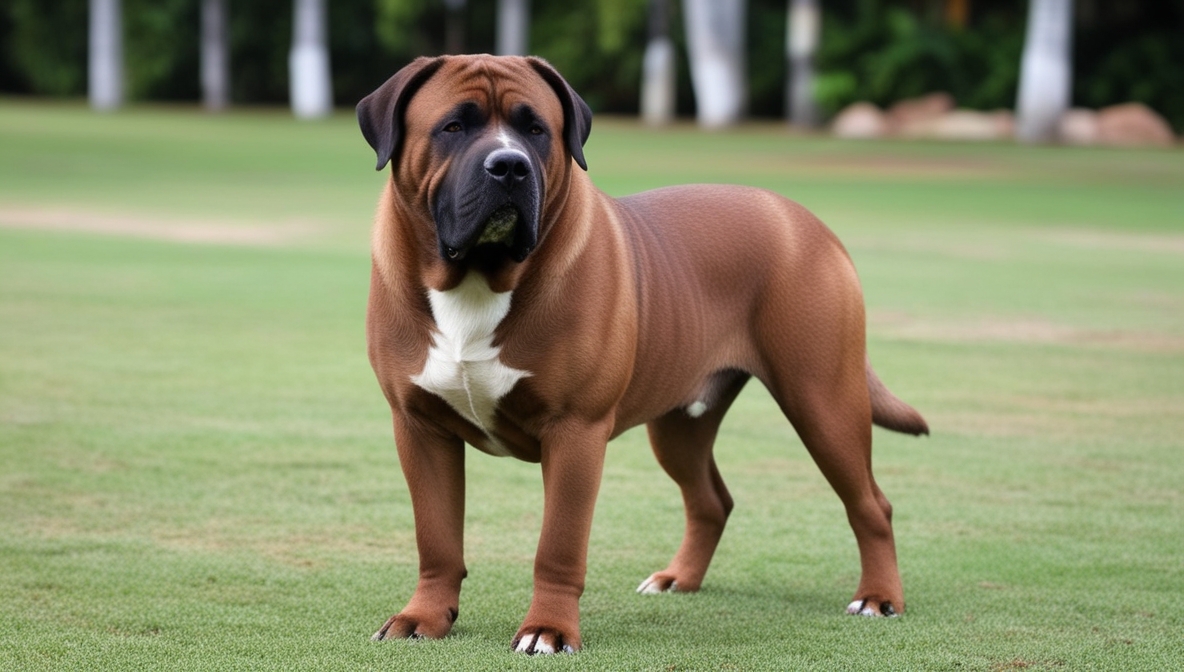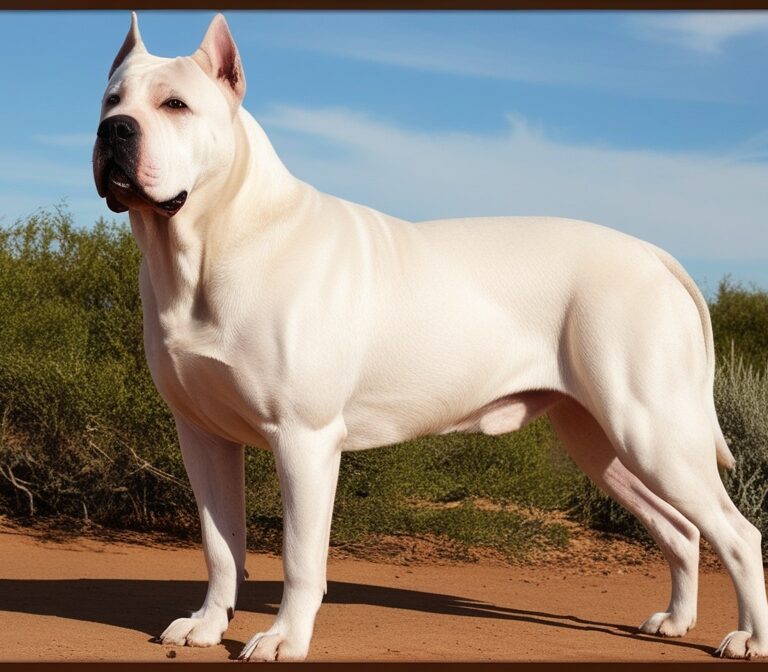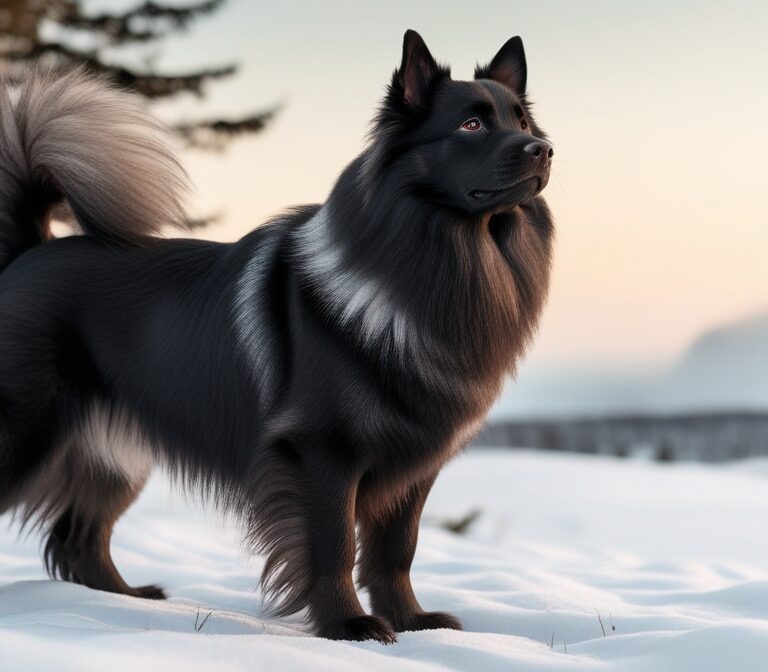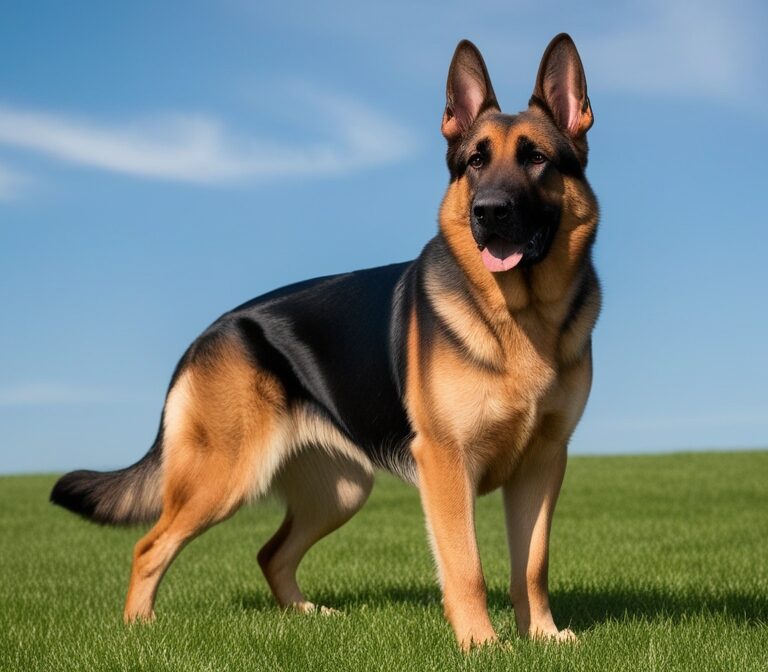Fila Brasileiro: The Complete Guide to Brazil’s Majestic Mastiff

Introduction to the Fila Brasileiro
The Fila Brasileiro, also known as the Brazilian Mastiff, is one of the most distinctive and respected dog breeds in the world. Originating from Brazil, this massive Mastiff-type guardian dog was bred to be both a working protector and a loyal family companion. Known for its courage, loyalty, and determination, the breed has earned a reputation as one of the most powerful guard dogs with a temperament unlike any other.
What makes the Fila Brasileiro truly unique is its combination of gentleness toward its family and strong protective instincts against strangers. Unlike many other breeds that balance friendliness with guardianship, the Fila’s temperament is heavily inclined toward suspicion of outsiders. This trait, known as ojeriza (a Portuguese word meaning aversion to strangers), defines much of the breed’s identity and sets it apart from other large dog breeds like the Cane Corso, Boerboel, or English Mastiff.
Physically, the Fila Brasileiro is a giant dog with a muscular build, loose skin, and a short, dense coat that can come in various colors such as brindle, fawn, or black. Males can weigh over 50–60 kg (110–130 lbs), while females are slightly smaller but still massive compared to most dogs. This physical presence, combined with their deep bark and imposing posture, makes them an effective deterrent against intruders.
However, owning a Fila Brasileiro is not for everyone. The breed requires responsible ownership, early training, and consistent socialization to manage its natural instincts. Because of its protective nature, some countries and regions have placed legal restrictions or outright bans on the breed, categorizing it as a “dangerous dog.” Despite these challenges, enthusiasts and experienced dog handlers consider the Fila Brasileiro one of the most loyal, affectionate, and devoted dogs to live with.
In this article, we will explore the Fila Brasileiro’s origin, physical traits, temperament, care requirements, training needs, legal status, and suitability as a family dog. By the end, you’ll have a comprehensive understanding of what it truly means to live with this legendary Brazilian guardian.
Origin and History of the Breed
The Fila Brasileiro has deep historical roots that trace back to colonial Brazil in the 16th and 17th centuries. When Portuguese colonists arrived in South America, they brought with them several European dog breeds such as the English Mastiff, Bloodhound, and Bulldog. Over time, these dogs interbred and adapted to the harsh Brazilian environment, eventually giving rise to the Fila Brasileiro—a breed specifically designed for guarding plantations, herding cattle, and hunting large predators.
The name “Fila” comes from the Portuguese verb filar, meaning “to hold” or “to grab,” reflecting the dog’s original purpose of catching and holding fugitive slaves, jaguars, and cattle until their handler arrived. This gripping instinct became one of the defining traits of the breed, making it an invaluable working dog in Brazil’s agricultural society.
Unlike many modern breeds that were developed primarily for companionship, the Fila Brasileiro was a functional working dog bred with one mission: to protect and serve. Farmers relied on them to guard livestock from predators such as jaguars and pumas, while plantation owners valued their unparalleled loyalty and courage in protecting land and property.
The breed’s reputation grew so strong in Brazil that a popular local saying emerged: “Faithful as a Fila”. This proverb reflects the devotion and attachment the Fila demonstrates toward its owner. While the breed is naturally aloof and suspicious of strangers (ojeriza), it bonds deeply with its family and is known to follow its master with complete obedience and loyalty.
Recognition of the breed came formally in the 20th century. The Brazilian Kennel Club (CBKC) established an official standard in 1946, and later the Fédération Cynologique Internationale (FCI) recognized the breed internationally. However, some kennel clubs outside Brazil, such as the American Kennel Club (AKC), do not recognize the Fila, largely due to concerns about its protective temperament and restrictions in certain countries.
Today, the Fila Brasileiro remains a symbol of Brazilian heritage, celebrated for its strength, bravery, and unwavering loyalty. While its role has shifted from plantation guardian to family protector and companion dog, the breed continues to carry the legacy of centuries-old Brazilian culture and tradition.
Physical Characteristics of the Fila Brasileiro
The Fila Brasileiro is classified as a large, molosser-type breed with a striking and imposing appearance. Males typically stand between 65–75 cm (25–29 inches) at the shoulder and weigh 50–82 kg (110–180 lbs), while females are slightly smaller, averaging 60–70 cm (24–28 inches) and 40–73 kg (90–160 lbs). Their sheer size alone makes them one of the most powerful guard dogs in existence.
One of the breed’s most distinctive features is its loose, saggy skin, especially around the neck and face, which gives the dog a unique, wrinkled appearance. This feature is thought to have originated from its Bloodhound ancestry, providing extra protection in fights and hunts, as well as enhancing scenting ability. The Fila’s head is large and rectangular, with a broad skull, deep muzzle, and drooping ears that fall forward close to the cheeks. Their eyes are medium-sized and slightly droopy, often giving them a serious, almost sad expression.
The coat of the Fila Brasileiro is short, dense, and smooth, requiring minimal grooming. Accepted coat colors include fawn, brindle, and black, though white markings on the chest and toes are permissible under breed standards. The brindle pattern, in particular, is highly prized and showcases the breed’s striking muscular frame.
The Fila’s body is athletic yet massive, built for both endurance and power. The chest is broad and deep, the back is strong, and the hindquarters are well-developed for explosive bursts of movement. Despite their heavy frame, Filas are surprisingly agile and capable of covering ground quickly when protecting property or herding cattle.
Another notable characteristic is the Fila’s gait, often described as a unique “camel-walk” where the legs on one side move almost simultaneously. This rolling movement gives the impression of effortless power and contributes to the breed’s endurance.
In sum, the Fila Brasileiro’s physical attributes perfectly reflect its original purpose: strength to subdue intruders or large animals, agility to navigate rough terrain, and an intimidating presence to deter threats. Its looks alone command respect, but combined with its protective instincts, the Fila is both a formidable guardian and a devoted family companion.
Temperament and Personality Traits
The Fila Brasileiro is best known for its unique temperament, which combines deep loyalty to family with a pronounced distrust of strangers. This distinctive blend of traits is rooted in centuries of selective breeding for guarding and protection. Unlike many breeds that strive to be social with outsiders, the Fila embodies a temperament described by the Portuguese word “ojeriza”—meaning aversion or distrust of strangers.
For families, the Fila Brasileiro is gentle, affectionate, and loyal. Owners often describe them as “shadows,” since they tend to follow their human companions from room to room. Their protective instincts are especially evident around children, whom they treat with remarkable gentleness. However, because of their size and strength, interactions with very young children must always be supervised.
When it comes to outsiders, the Fila shows a very different personality. The breed’s natural reaction to strangers is suspicion and hostility, which is not a flaw but rather a deliberate trait bred into the dog for centuries of use as a guardian. This is why early and ongoing socialization is essential. With proper exposure, Filas can learn to tolerate the presence of strangers, but they rarely become friendly or welcoming.
Another notable aspect of their temperament is their bravery and determination. The Fila Brasileiro does not hesitate to act when it perceives a threat, making it one of the most reliable watchdogs and guard dogs. This protective nature, however, requires experienced ownership. In inexperienced hands, a Fila may develop uncontrollable aggression, which is why the breed is banned or restricted in several countries.
Despite their intimidating nature, Filas are not reckless. They are calm, stable, and obedient to their owners, showing a high level of self-control when properly trained. Their devotion is so strong that many owners report their Filas act almost like bodyguards, always positioning themselves between the family and a perceived threat.
In summary, the Fila Brasileiro’s personality is a blend of gentleness at home, suspicion toward outsiders, and unwavering loyalty. These traits make them an ideal choice for experienced dog owners who want a protective companion, but they can be overwhelming for first-time dog handlers. Understanding this balance is essential before bringing a Fila into your home.
Lifespan and General Health
Like many large dog breeds, the Fila Brasileiro has a lifespan shorter than that of smaller dogs. On average, Filas live between 9 to 11 years, though some may reach 12 or more with excellent care. Their longevity depends heavily on genetics, diet, exercise, and access to quality veterinary care.
The most common health issue affecting the breed is hip dysplasia, a genetic condition where the hip joint does not develop properly. This disorder is common in giant breeds and can lead to arthritis, pain, and reduced mobility. Responsible breeders use hip scoring programs to minimize the risk in puppies, but owners should still be prepared for joint-related issues as the dog ages.
Another concern is bloat (gastric dilatation-volvulus), a life-threatening condition where the stomach twists and fills with gas. Since the Fila is a deep-chested breed, owners should feed smaller meals multiple times a day rather than one large meal and avoid vigorous exercise immediately after eating.
Obesity is also a risk factor in the Fila Brasileiro, especially because of its large frame. Excessive weight puts additional stress on the joints and can shorten lifespan. A balanced diet with controlled portions, along with daily exercise, is crucial for maintaining a healthy weight.
Other possible health issues include elbow dysplasia, progressive retinal atrophy (PRA), and skin infections due to their loose folds. Regular grooming and veterinary checkups can help manage these concerns early.
To maximize their health and lifespan, owners should ensure the Fila Brasileiro receives:
- High-quality nutrition with the right balance of protein and joint-supporting supplements.
- Regular exercise to maintain muscle tone without stressing the joints.
- Routine veterinary exams to detect and treat issues early.
- Preventive care such as vaccinations, deworming, and flea/tick prevention.
While their average lifespan is modest compared to smaller breeds, a well-cared-for Fila will provide years of unwavering protection and companionship. Owners often remark that their devotion makes every year with a Fila Brasileiro deeply rewarding.
Final Thoughts:
The Fila Brasileiro is a truly remarkable breed, embodying the strength, loyalty, and protective instincts that have defined its legacy for centuries. Originating in Brazil as a versatile working dog, the Fila was bred not for beauty or companionship alone, but for functionality and devotion. Its history as a plantation guardian, cattle herder, and fearless protector explains why its temperament remains so distinct even today.
For the right owner, the Fila Brasileiro is an unmatched family guardian. Within its household, the breed shows gentleness, affection, and unwavering attachment. Owners often describe them as docile companions that are happiest when close to their family, forming bonds so strong that the dog becomes a constant shadow. Around children, Filas can be protective and patient, though their sheer size means supervision is always necessary.
At the same time, the breed’s ojeriza toward strangers makes it unsuitable for everyone. A Fila is not a dog that will eagerly greet visitors or enjoy a busy social environment. Instead, its natural instinct is to remain suspicious and protective, which can pose challenges in modern urban settings. This is why the breed is restricted or banned in some countries, and why it requires responsible, experienced ownership.
From a practical perspective, potential owners must also consider the care and costs of raising a Fila Brasileiro. With a lifespan of 9–11 years, the breed demands specialized nutrition, consistent exercise, and veterinary attention to manage common health issues such as hip dysplasia and bloat. Their size and power also mean they need space to move freely, making them better suited to homes with large yards or rural settings rather than apartments.
The key to a successful relationship with a Fila Brasileiro is early socialization, firm but fair training, and lifelong commitment. This is not a breed for casual owners or those seeking a highly sociable pet. However, for individuals or families prepared to handle its needs, the Fila offers something truly rare in the canine world: a guardian with absolute loyalty, unmatched bravery, and an enduring bond that cannot be broken.
In conclusion, the Fila Brasileiro is best described as a breed of contrasts—tender with loved ones, fierce against threats, gentle at home yet formidable in defense. If you are searching for a devoted protector, a loyal family dog, and a living piece of Brazilian heritage, the Fila Brasileiro may be the perfect companion. But if you are not ready for the responsibility, training, and challenges that come with this legendary guardian, it is wiser to admire the breed from afar.





